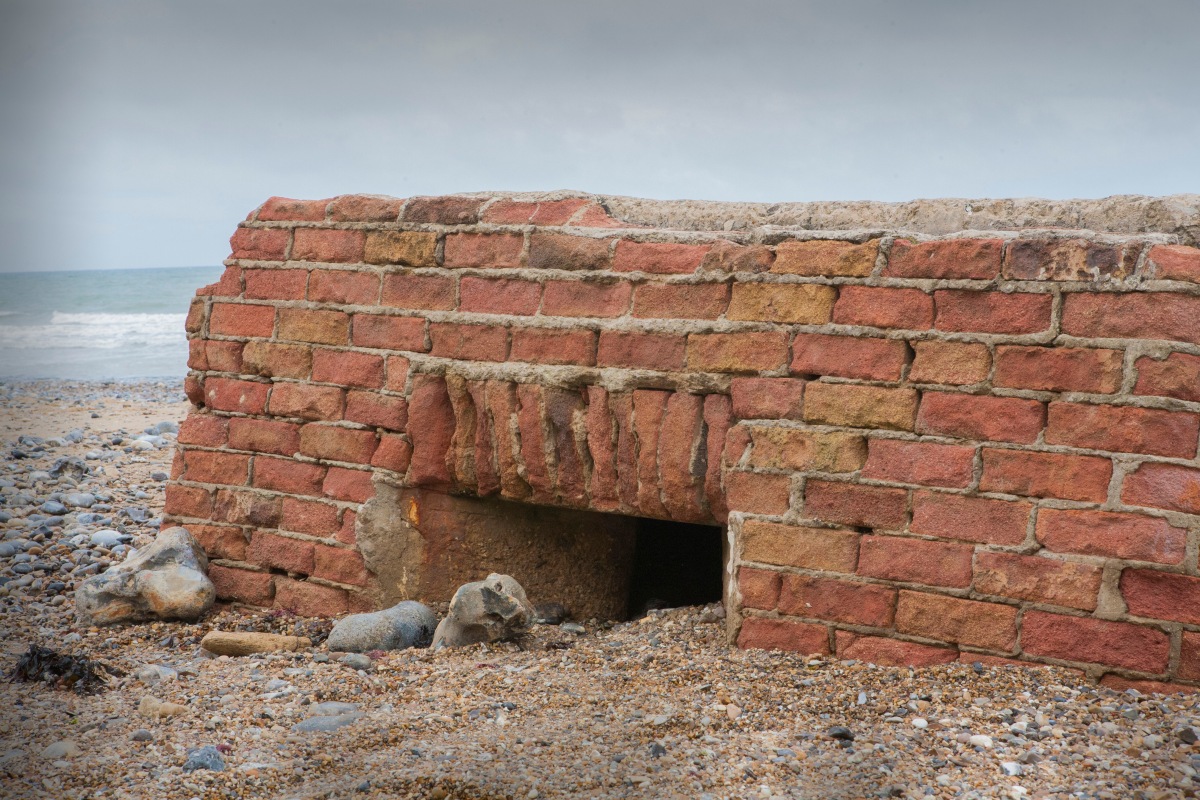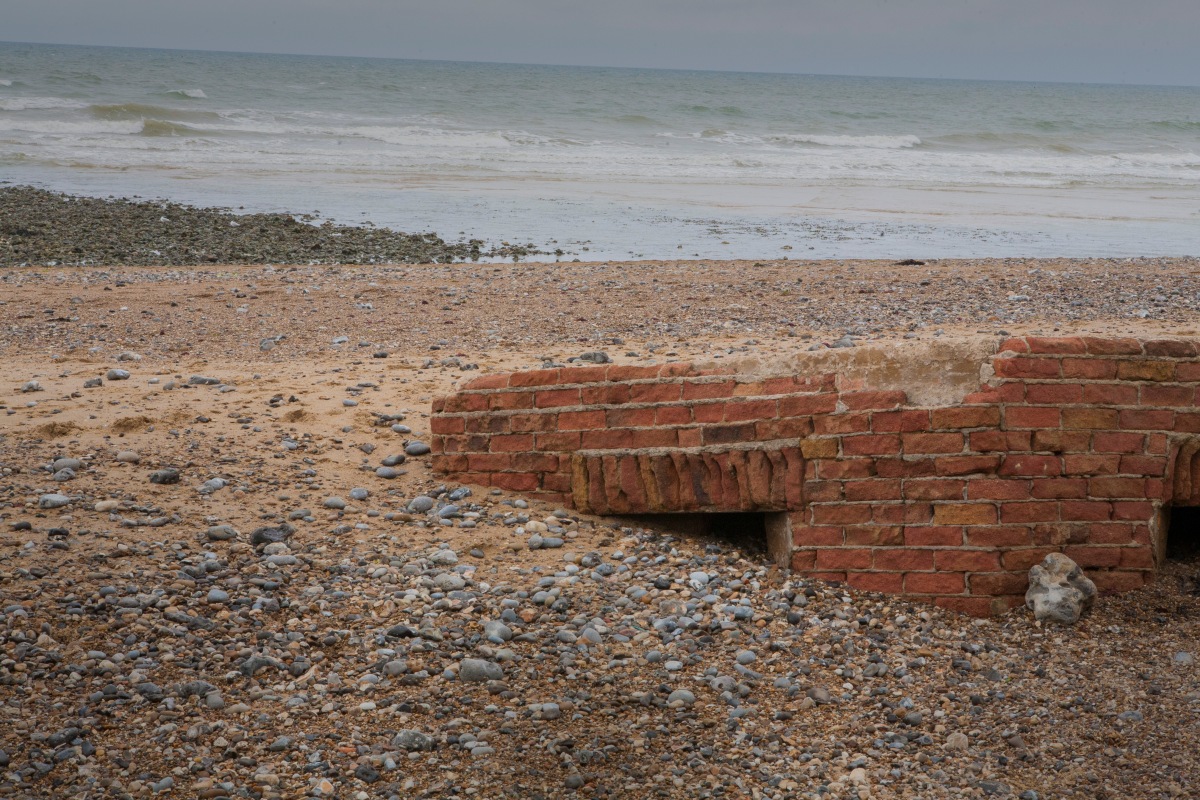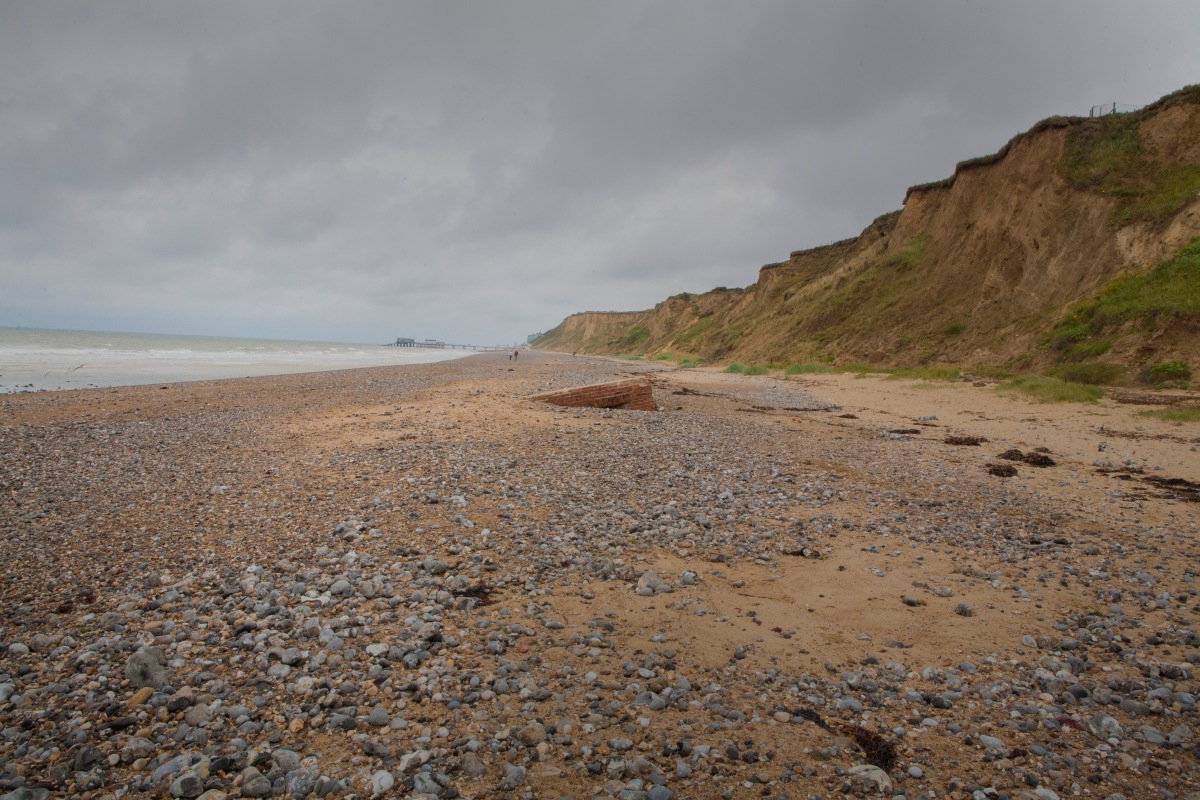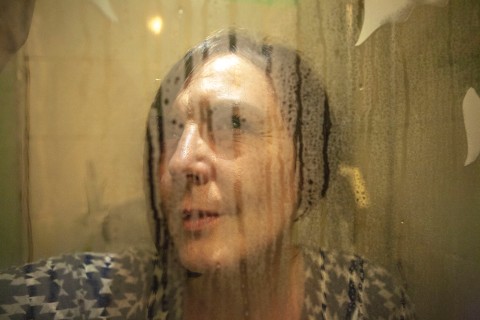After planning my photos, I got my equipment together and went and took my photos. I made sure to stick to my plan as closely as possible but I did change a few things where I felt it would work better. Here are my final photos and how I feel they turned out:

For my first photo, I took a close up of one of the visible windows and a corner of the building. I felt this showed how much the building is vanishing into the floor/sand and how battered the bricks are too. This building has been through a lot and this really is shown on the corner bricks as they have been rounded off due to the sea passing over it every day. The bricks are no longer set shapes but are more uneven and jagged. The sand is flowing in through the window and filling the building up meaning that the building is inaccessible. In editing I made the outside darker due to Schreck’s work but I kept the building light and unedited as I like that side of Feijen’s work as it means you appreciate the natural look of the building. I did take them on an over cast day which helped get a bright look to the photos and also meant that the sky was completely grey. I like how your eye gets lead to the window and how dark and gloomy it is in there.

For my second photo, I tried to concentrate on the slant of the building and how much the building is falling into the sand. I also took it on the side with the door to show how there is no way in and to also show that you wouldn’t possibly know that that is the door way due to how covered up it is. I took the photo from a little away so I could include the beach going into the distance on the left and to have the sea on the right. This shows the surrounds and how out of place the building is. The slant of the building is facing the sea due to the backwash from the waves when it’s high tide. I like how this photo gives you a feel for how much this building is vanishing under the floor and will soon be completely gone.

For the third photo I wanted to show the same as the last photo but show more of the sea to make the viewer feel the threat of it and to understand the power of it and what it can do to a building. The picture also shows a window which is pretty much completely covered and part of another window which is like Schreck’s work where he only showed part of the second bed as it makes you feel like it could go on for ever. You can also see parts of the building where the bricks have come away due to it being battered by the sea. This building isn’t just disappearing; it’s also falling apart. I like this photo due to the feeling of helplessness that the sea makes the viewer feel towards the building.

For my fourth photo, I wanted to show the roof of the building being eaten by the floor. The way the sand is creeping up the roof shows the feeling that this building is being swallowed up by the floor/sand and every day it will be more gone and this is actually true as from the time I took my test shots to the point I took my final shoots I couldn’t take a photo through one window and out of the opposite window. It was only a little bit over a week between each shoots and there was already a massive difference in the amount of coverage. I like this photo as it gives a personality to the sand and makes it seem scary.

For my fifth photo, I took a faraway shot of the building to show how unimportant it is on the beach and how it could easily be walked past and not noticed. The beach is so big and vast that the building just isn’t noticed easily and can be walked past. For this photo I included a lot of sky and darkened it to make the photo darker and scary. I would have liked it more if the clouds would have had more texture just like in my test shots as it gives more emotion to the location.

For my last photo I took a closer photo from the same angle as the last but the purpose of this is to show how the importance of the building is stolen due to the pier being more important to most holiday guests and anyone on the beach due to the building not being fun or an activity which can be done. This means that the building is not important anymore and this photo really shows why. I also feel having all the people in the background helps prove my point as it shows that they are all walking towards the pier and are not interested in the building. I like how this photo came out and really helps show the viewers that this building doesn’t matter anymore.
Overall I feel that these photos show how buried and forgotten this building has become. The building went from being something that looked after our country to protect us from oncoming enemy boats to an unloved pile of bricks. This is also shown due to it once being on the top of the cliff and now being on the beach demonstrating its importance falling just like it did. I do feel that the clouds could have looked a bit more moody and had more shading but I’m overall happy with the way it shows the story of this building and it’s life on the beach.

















































































